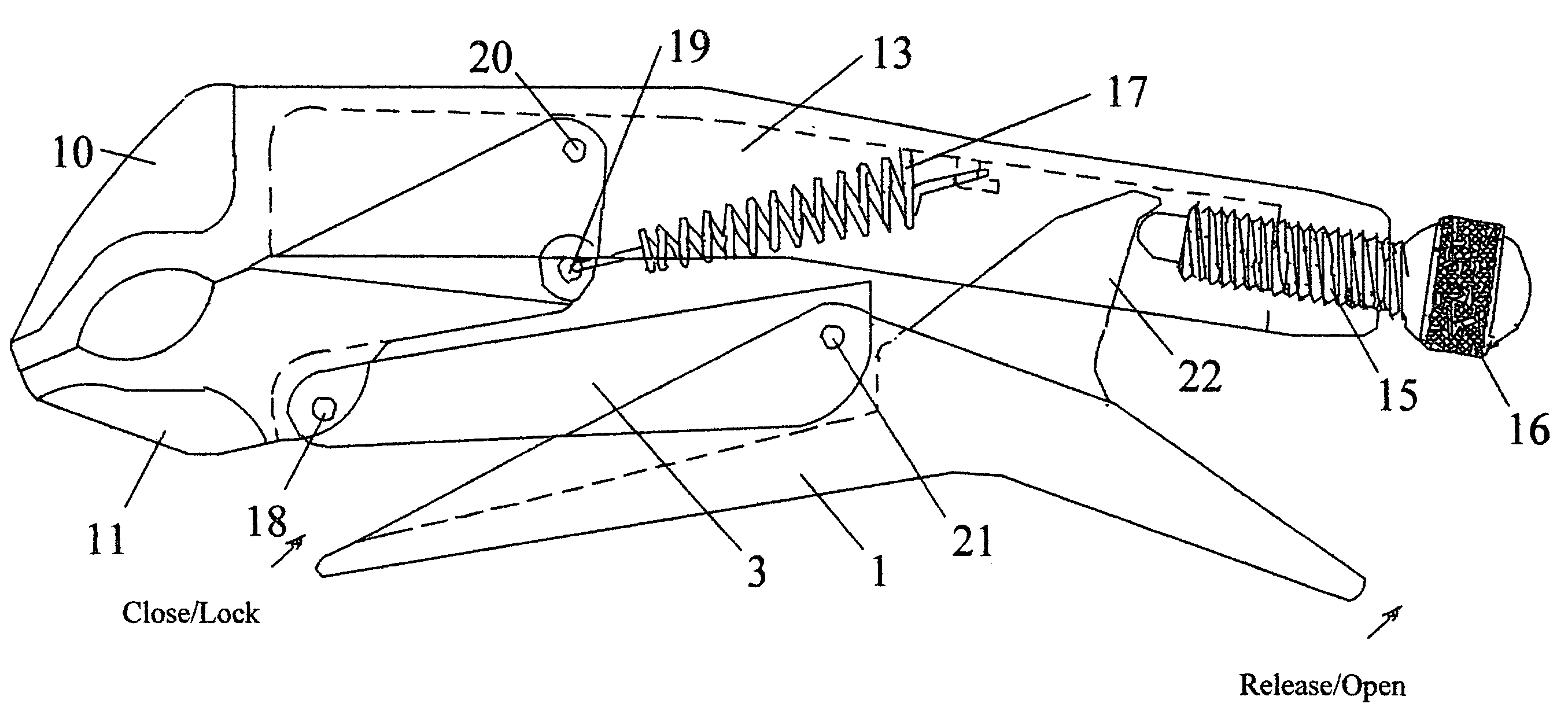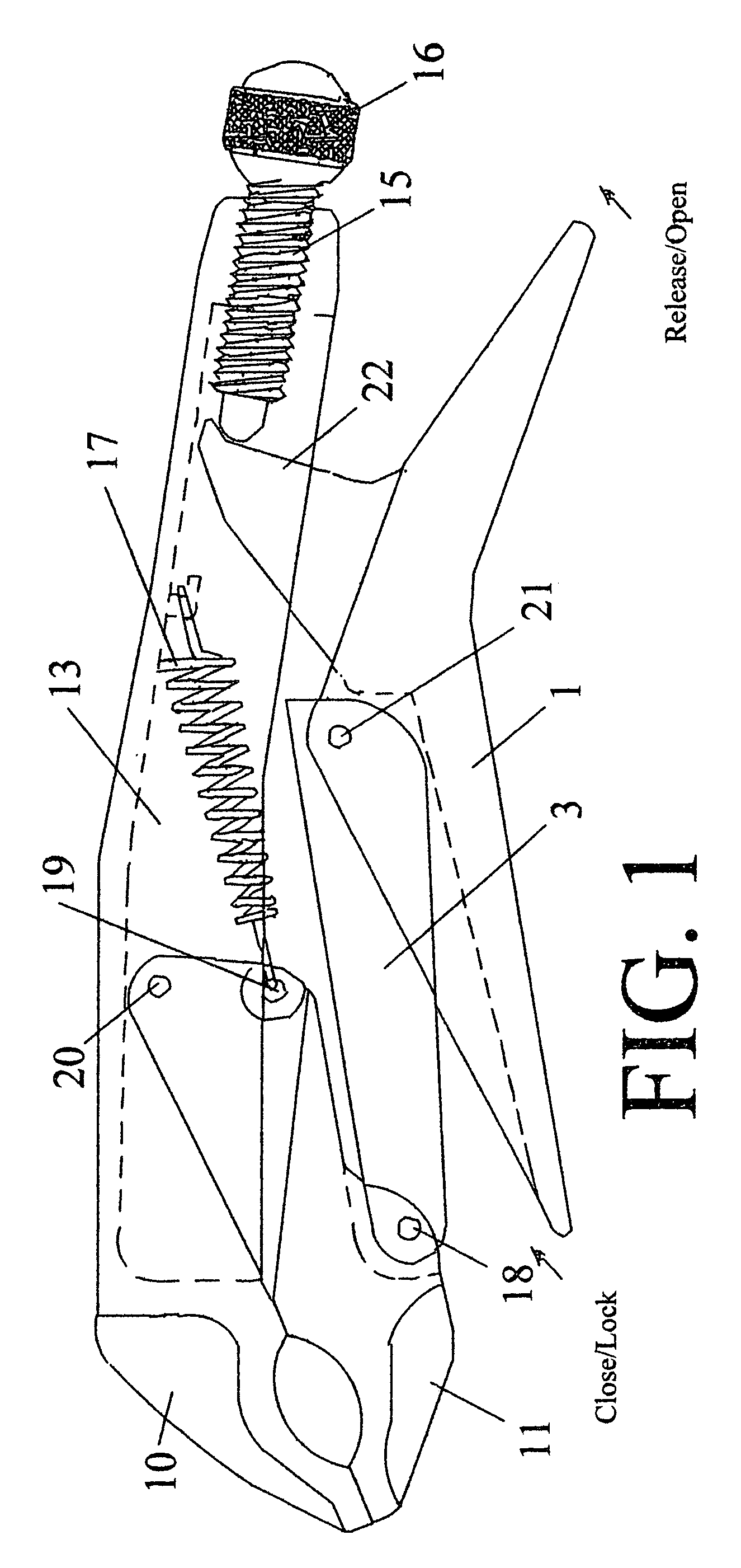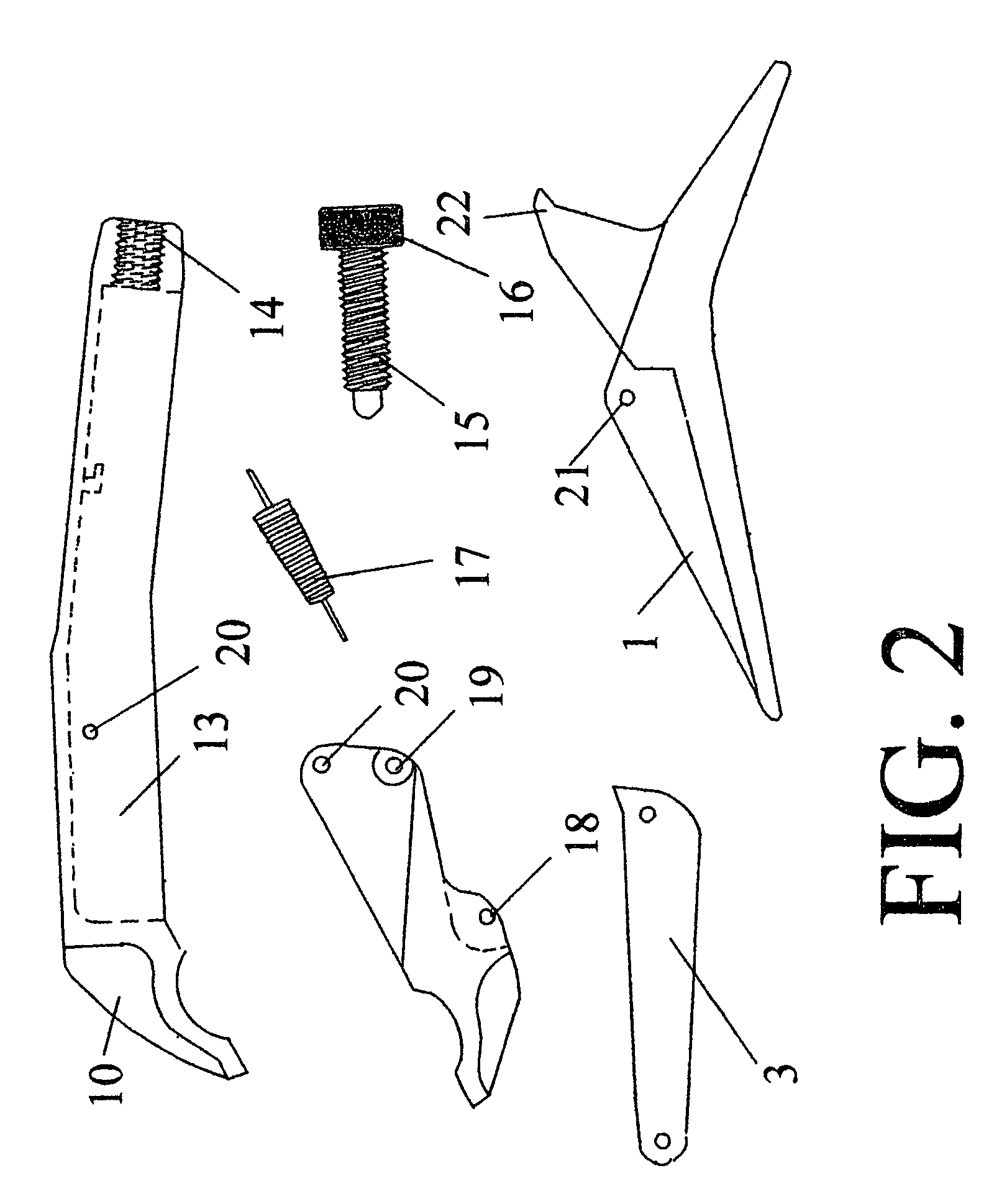Dual action locking pliers
a technology of locking pliers and pliers, which is applied in the field of gripping tools, can solve the problems of disproportionate hand size, difficulty and at times impossible to grasp workpieces, and achieve the effect of facilitating the opposing functions of locking and unlocking the tool jaws, amplifying the force of hand grip, and reducing the strength of hand grip
- Summary
- Abstract
- Description
- Claims
- Application Information
AI Technical Summary
Benefits of technology
Problems solved by technology
Method used
Image
Examples
Embodiment Construction
[0030]As shown in FIG. 1, tool 2 includes a fixed handle 13 extending out to a stationary jaw 10 on the end and a threaded adjustment screw 15 at the opposing end. This adjustment screw fits inside a threaded aperture 14 and is conveniently gripped by the knurled end 16. The inventive vise grip pliers use a movable lower jaw 11 connected to the fixed handle 13 at pivot 19 and effectively are governed as a gripping mechanism by pivot 18 and toggle 3. Toggle 3 rests against and is pivotally operated in conjunction with rocking handle 1 and pivot 21. Lower jaw 11, toggle 3 and rocking handle 1 form the grip and allow a user to lock the inventive tool to a workpiece.
[0031]FIG. 2 shows an exploded view of the instant invention showing stationary jaw 10, lower movable jaw 11, fixed handle 13, jaw adjustment screw 15, adjustment screw aperture 14, movable jaw tensioning spring 17, toggle 3, rocking handle 1, dimple nosed link 22, and four pivots 18, 19, 20, 21. From this view the parts of ...
PUM
 Login to View More
Login to View More Abstract
Description
Claims
Application Information
 Login to View More
Login to View More - R&D
- Intellectual Property
- Life Sciences
- Materials
- Tech Scout
- Unparalleled Data Quality
- Higher Quality Content
- 60% Fewer Hallucinations
Browse by: Latest US Patents, China's latest patents, Technical Efficacy Thesaurus, Application Domain, Technology Topic, Popular Technical Reports.
© 2025 PatSnap. All rights reserved.Legal|Privacy policy|Modern Slavery Act Transparency Statement|Sitemap|About US| Contact US: help@patsnap.com



